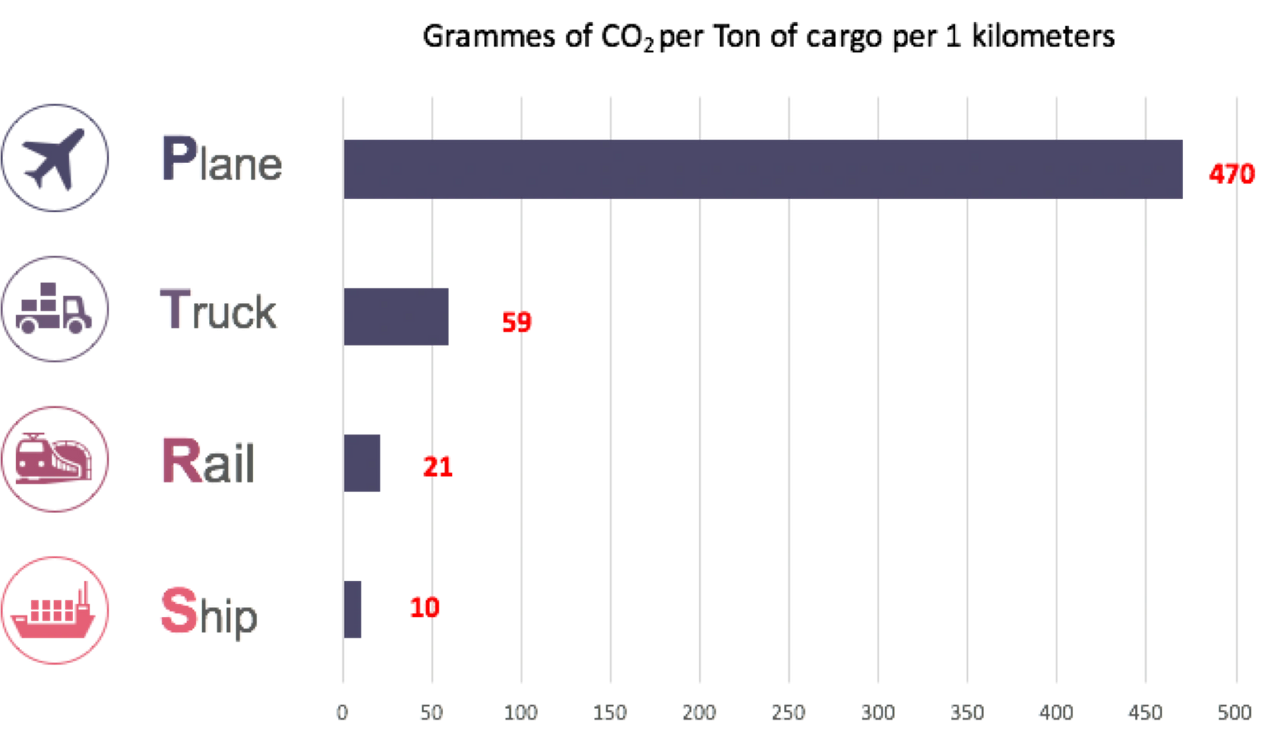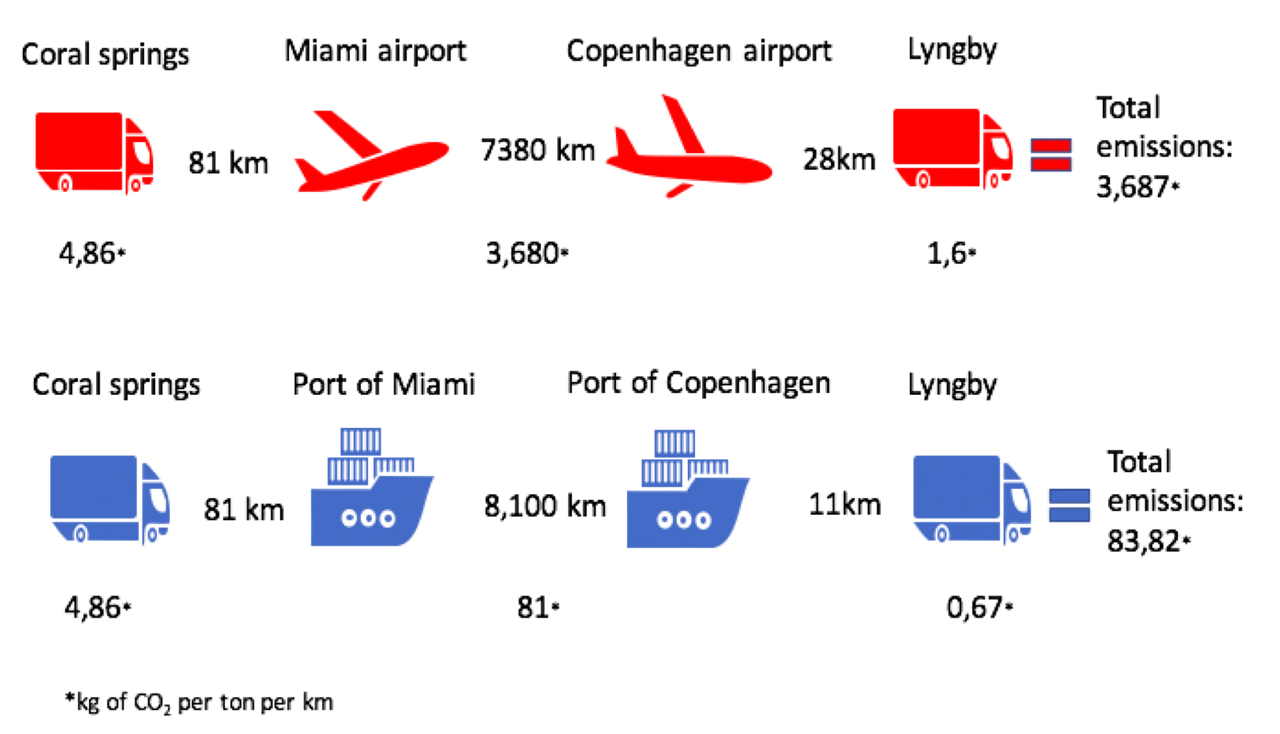It’s time to consider the environmental impact of spare parts transportation.
There is a difference of over 4,000% in emissions between the most and the least polluting way of transporting cargo.
Transport represents one of the most polluting sectors and it is responsible for almost 25% of global greenhouse gas emissions. GHG emissions from the sector have more than doubled since 1970, reaching almost 7 Gigatonnes CO2 equivalent, and freight counts as 17% of it. According to the latest IPCC (the Intergovernmental Panel for climate change) report, the amount of transport emissions is destinated to increase in the next decades due to the growth of freight activities. In fact, despite the introduction of more efficient means of transportation and new policies, an increase in GHG emissions has still been observed because there has been an increase in general consumption.
A greenhouse gas is a gas that absorbs and traps heat in the atmosphere contributing to the greenhouse effect. The greenhouse effect is a natural process that has been altered by human activities in the last decades causing an increase of about 1.0°C of average global temperature compared to pre-industrial levels. The principal contributors of CO2 produced by human activities come from the combustion of fossil fuels where the energy, transportation, and industry sectors are the main emitters.


The amount in grams of CO2 released per ton of freight per km (www.re-flow.io)
Air freight represents the most polluting means of transportation while rails and ships are the most “environmentally friendly”. Even though ships represents the less polluting system of transport it still contributes to about 2-3% of the total GHG emission which is an equivalent to 796 million tonnes a year. This amount of emissions is the same as Germany’s total CO2 pollution.
The figure below shows an example of the carbon footprint of the transportation of 1 ton of cargo from Coral Springs in Miami, USA to Lyngby, Denmark. The calculation compares the variations in CO2 equivalent emission between land and air freight and land and water freight.

Carbon footprint of the transportation of 1 ton of cargo from Coral Springs in Miami, USA to Lyngby, Denmark.
As it is shown in the figure, the environmental impact is much smaller by transporting by land and sea because the total emissions decrease by 98% compared to transporting the same cargo by land and air.
The road to commit to decreasing the environmental impact of the transport sector is long, but it starts with the companies taking action themselves. A behavioral change is necessary together with technological improvements. Rethinking business logistics, analyzing the supply chain structure and prioritization of sourcing locally instead of overseas can optimize the company’s transportation network and decrease its environmental impact. Another solution to consider would be to ship a spare part well in advance in order to avoid airfreight and to choose a less polluting way of transportation such as rail or shipping. Finally, better performance management and capacity optimization provided by digital platforms can also help to decrease environmental impacts caused by the companies.
Read more at www.re-flow.io








